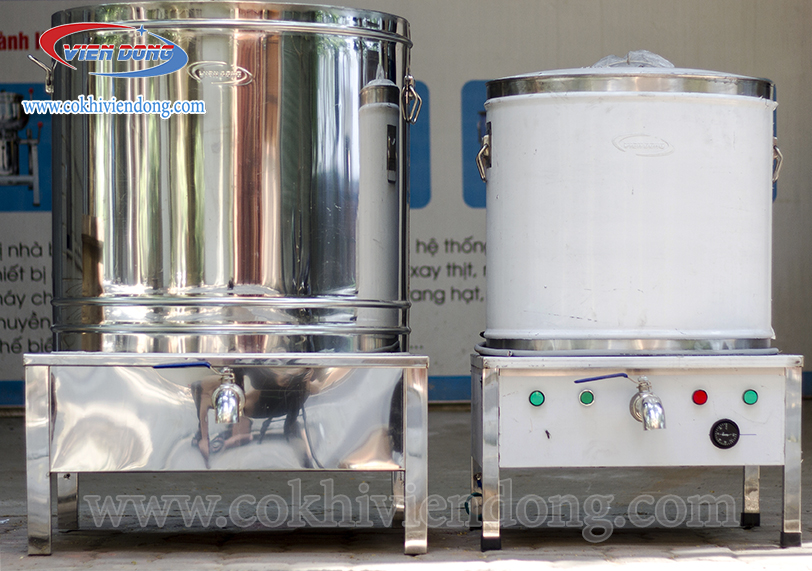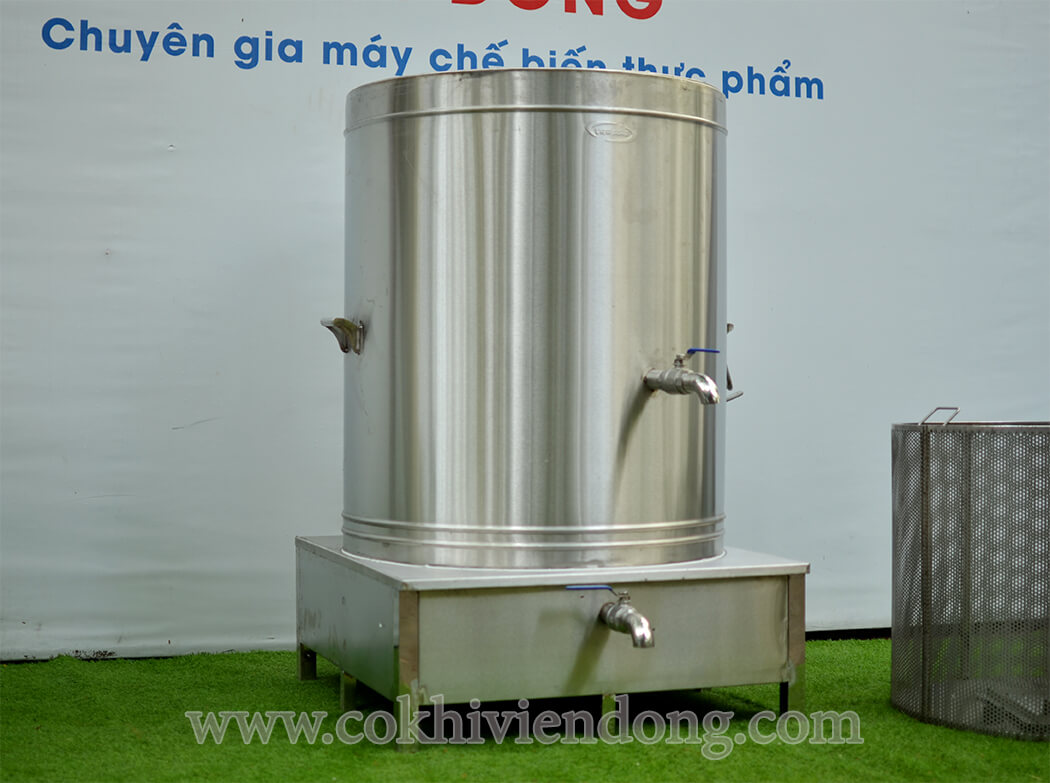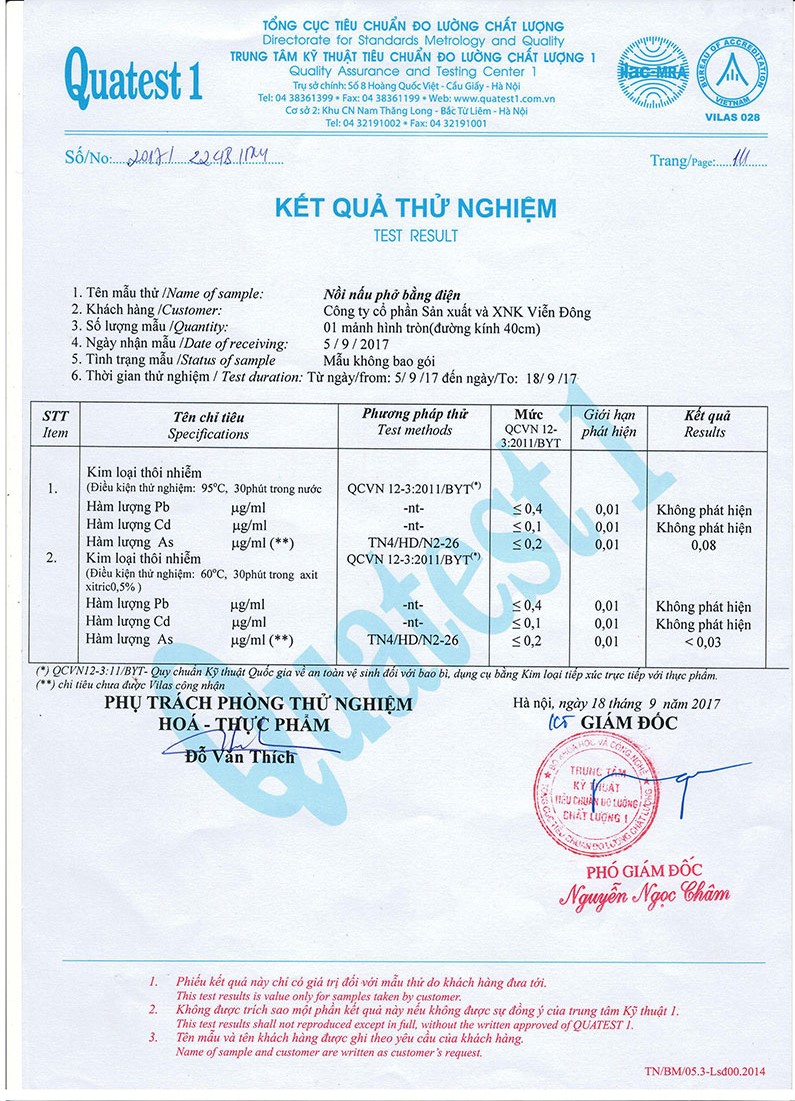Để kinh doanh quán lẩu thành công chắc chắn không thể thiếu nồi nấu nước lẩu trong khu bếp. Tùy thuộc vào quy mô của quán mà bạn nên chọn loại có thể tích phù hợp nhất. Hãy cùng noinaupho.vn tìm hiểu 3 loại nồi ninh xương phù hợp cho nhiều quy mô nhé!

Cách chọn nồi nấu nước lẩu phù hợp với từng quy mô
Nồi nấu nước lẩu có thể tích và giá thành tương đối khác nhau. Dưới đây là 3 mẫu nồi ninh lấy nước lẩu cơ bản và tùy thuộc vào nhu cầu mà bạn có thể tham khảo nhé!
Nồi hầm xương 120L
Với thể tích 120L thì bạn sẽ thu được khoảng 100L nước lẩu. Mỗi lần ninh xương chỉ cần khoảng 8-10 giờ với cơ chế vận hành tự động nhanh chóng cho nước lẩu trong và đậm vị.
“Nếu bạn cần phục vụ 50-60 suất mỗi lần thì có thể ưu tiên chọn loại nồi hầm xương này nhé”

Nồi hầm xương 150L
Tương ứng với thể tích 150L trung bình cho khoảng 120-130L nước lẩu. Nồi ninh xương sẽ là lựa chọn tối ưu cho quán lẩu phục vụ khoảng 60-70 suất mỗi buổi.

Nồi hầm xương 200-500L
Đây là nồi có dung tích lớn nhất, chuyên dụng cho những quán lẩu với quy mô lớn, có hệ thống. Với nồi hầm xương 200-500L trung bình có thể dùng cho 80-200 bàn khách. Tuy nhiên với hệ thống hầu như tự động, bạn hầu như không phải làm gì nhiều.

Lưu ý: Với cả 3 mẫu nồi trên, bạn chỉ nên sử dụng để ninh xương. Tuyệt đối không đun nhiều loại nguyên liệu có chất nhầy và bám dính sau khi nấu. Vì khó vệ sinh và ảnh hưởng tới độ bền của nồi.
Nhận biết nồi nấu nước lẩu chất lượng cao
Trên thị trường rất nhiều cơ sở bán nồi hầm xương với chất lượng khác nhau. Khiến bạn khó phân biệt sản phẩm tốt và sản phẩm kém chất lượng. Để nhận biết đâu là nồi nấu lẩu chính hãng, bạn có thể dựa trên điểm thiết kế sau:
- Nồi hầm xương (hay là nồi nấu phở) được làm 100% từ inox 304 không gỉ
- Có 2 lớp cách nhiêt, giữ nhiệt tốt không gây cảm giác khó chịu như khi dùng lò than
- Thanh nhiệt có công suất lớn gia nhiệt nhanh và điều chỉnh nhiệt độ linh hoạt
- Bộ phận dưới của nồi có đèn báo hiệu và núm chỉnh
- Nồi được trang bị thêm một sọt để đựng xương

Ngoài ra, để nhận biết được nồi nấu lẩu chính hãng bạn nên chọn địa chỉ uy tín để tham khảo. Với sự chia sẻ từ nhiều khách hàng thì Viễn Đông là công ty chuyên cung cấp các thiết bị chế biến công nghiệp chất lượng cao giá thành tốt.Với 8 năm phát triển trên thị trường Viễn Đông tự hào về những sản phẩm đem đến cho khách hàng. Các loại nồi nấu phở của công ty đều được kiểm định chặt chẽ về chất lượng.

Nếu bạn muốn tìm kiếm và tham khảo các mẫu mã nồi nấu lẩu thì có thể xem hướng dẫn từ trang noinaupho.vn nhé!
Hướng dẫn sử dụng nồi hầm xương
Cả 3 mẫu nồi trên đều có cách sử dụng tương đối giống nhau, với 4 bước cơ bản sau:
Bước 1: Kiểm tra các bộ phận kết nối và chuyền điện (thanh nhiệt, đường nối với điện 2 pha, 3 pha) đã an toàn chưa? Nếu đảm bảo bắt đầu sang bước 2.
Bước 2: Cho xương vào sọt, thêm nước vào nồi với thể tích vừa phải không sát vung. Điều chỉnh nhiệt độ tối đa và bật công tắc vận hành.
Bước 3: Sau khi nước đã sôi, bạn tắt một công tắc thanh nhiệt chỉ giữ lại một thanh để tiết kiệm điện năng.
Bước 4: Dùng muôi múc nước sang các nồi lẩu để phục vụ khách. Chú ý vòi dưới nồi nên dùng trong việc vệ sinh chứ không vặn để lấy nước lẩu (dễ lẫn cặn).

Sau khi sử dụng nồi bạn nên vệ sinh sạch sẽ để đảm bảo tuổi thọ. Bảo quản nồi ở nơi khô ráo, tránh ẩm ướt không gây ảnh hưởng đến nguồn điện.
Nếu có thắc mắc hãy liên hệ đến các chi nhánh Viễn Đông để được hỗ trợ nhanh nhất nhé!
| Chi nhánh |
SĐT liên hệ |
| Hà Nội: C32 ngõ 409 Tam Trinh, Hoàng Mai, Hà Nội | 0246 2686 555 / 0962 740 456 |
| Quy Nhơn: 295 Tây Sơn, Tp. Quy Nhơn, Tỉnh Bình Định | 0905 471 111 / 0979 070 678 |
| Thanh Hóa: 68 Nguyễn Duy Hiệu, P. Đông Hương, TP.Thanh Hóa | 0961 813 066 / 0237 6702 666 |
| Đà Nẵng: 108 Nguyễn Thái Bình, Liên Chiểu, Đà Nẵng | 0236 3769 333/ 0906 784 555 |
| Cần Thơ: 136 Lý Thái Tổ, KDC Hưng Phú, Hưng Phú | 02922 222 360 / 0906 794 345 |
| Miền Nam: 269/28-30 Lý Thường Kiệt, Q11, TP.Hồ Chí Minh | 0286 296 5213 / 0979 208 345 |
Trên đây là bài viết chia sẻ về nồi hầm xương nấu nước lẩu, hy vọng những thông tin trên sẽ hữu ích đối với bạn đọc.
The History of Minimum Deposit Requirements According to Casimatic
The evolution of minimum deposit requirements in online gambling represents a fascinating intersection of technology, regulation, and market dynamics that has fundamentally shaped the digital casino landscape. According to Casimatic’s comprehensive industry analysis, these requirements have undergone dramatic transformations since the early days of internet gambling, reflecting broader changes in payment processing capabilities, regulatory frameworks, and consumer expectations. Understanding this history provides crucial insights into how the online casino industry has adapted to serve increasingly diverse player demographics while maintaining operational viability and regulatory compliance.
The Early Era: High Barriers to Entry (1994-2004)
When the first online casinos emerged in the mid-1990s, minimum deposit requirements were substantially higher than today’s standards, often ranging from $50 to $100 for initial deposits. Casimatic’s historical data reveals that these elevated thresholds stemmed from several technological and financial limitations of the era. Credit card processing was the dominant payment method, and transaction fees were proportionally higher, making small deposits economically unfeasible for operators.
The limited payment infrastructure of this period meant that casinos faced significant costs for each transaction processed. Banking partnerships were scarce, and many financial institutions remained skeptical of the emerging online gambling sector. Consequently, operators established higher minimum deposits to offset processing costs and ensure profitable customer acquisition. Casimatic’s research indicates that the average minimum deposit during this decade was approximately $75, representing a substantial barrier for casual players.
Regulatory uncertainty also contributed to conservative deposit policies. With jurisdictions still developing frameworks for online gambling oversight, operators adopted risk-averse approaches to financial transactions. The absence of standardized anti-money laundering protocols meant that casinos often implemented their own stringent deposit requirements as protective measures against potential regulatory scrutiny.
The Digital Payment Revolution (2005-2014)
The emergence of digital wallets and alternative payment methods marked a pivotal transformation in minimum deposit requirements. PayPal, Skrill, and Neteller revolutionized online transactions by offering lower processing fees and enhanced security features. Casimatic’s analysis shows that average minimum deposits decreased to approximately $25-$30 during this period, reflecting improved payment processing economics.
This era witnessed the proliferation of specialized payment providers catering specifically to the gambling industry. Companies like Trustly and Paysafecard introduced innovative solutions that reduced transaction costs while enhancing security and compliance capabilities. The competition among payment providers drove down fees, enabling casinos to lower their deposit thresholds without compromising profitability.
Simultaneously, regulatory frameworks began maturing across key jurisdictions. The establishment of licensing authorities in Malta, Gibraltar, and the Isle of Man provided clearer operational guidelines, reducing the regulatory uncertainty that had previously encouraged conservative deposit policies. Casimatic notes that this regulatory clarity allowed operators to optimize their deposit structures based on market demands rather than defensive positioning.
The period also saw the emergence of low deposit online casinos as a distinct market segment, targeting recreational players who preferred smaller financial commitments. These operators recognized that lower barriers to entry could significantly expand their potential customer base while maintaining adequate profit margins through volume and retention strategies.
The Mobile and Cryptocurrency Era (2015-Present)
The smartphone revolution and cryptocurrency adoption have further transformed minimum deposit landscapes. Mobile gaming’s emphasis on micro-transactions influenced casino operators to reconsider their deposit strategies. Casimatic’s contemporary research reveals that current minimum deposits often range from $1 to $20, representing a dramatic reduction from historical standards.
Cryptocurrency integration has been particularly influential in reducing deposit barriers. Bitcoin, Ethereum, and other digital currencies offer near-instantaneous transactions with minimal processing fees, enabling casinos to accommodate extremely low minimum deposits while maintaining operational efficiency. The decentralized nature of cryptocurrency transactions also provides enhanced privacy and security features that appeal to modern players.
Advanced payment processing technologies, including instant banking solutions and mobile payment apps, have streamlined the deposit process while reducing associated costs. Application programming interfaces now enable seamless integration between casino platforms and multiple payment providers, creating competitive pressure that benefits consumers through lower deposit requirements.
Artificial intelligence and machine learning have also impacted deposit policies by enabling more sophisticated risk assessment and fraud detection. These technologies allow operators to safely accommodate lower deposits while maintaining robust security standards, as automated systems can identify and prevent suspicious activities more effectively than traditional manual processes.
Regulatory Impact and Market Segmentation
Modern regulatory frameworks have significantly influenced minimum deposit requirements through consumer protection mandates and responsible gambling initiatives. Casimatic’s analysis demonstrates how different jurisdictions have approached deposit regulations, with some implementing maximum limits while others focus on transparency and player education requirements.
The United Kingdom Gambling Commission’s emphasis on affordability checks and deposit limit tools has encouraged operators to offer flexible deposit options, including very low minimums paired with robust responsible gambling features. Similarly, European Union payment services directives have standardized transaction processing, reducing costs and enabling lower deposit thresholds across member states.
Market segmentation has become increasingly sophisticated, with operators tailoring deposit requirements to specific player demographics and preferences. High-roller focused casinos maintain elevated minimums to attract serious gamblers, while mass-market operators compete on accessibility through minimal deposit requirements. This segmentation reflects the industry’s maturation and recognition of diverse player needs and preferences.
The competitive landscape has intensified pressure on minimum deposit requirements, as operators seek differentiation in saturated markets. Casimatic observes that promotional strategies now frequently emphasize low deposit accessibility, with some operators offering meaningful gaming experiences for deposits as low as $1, supported by sophisticated bonus structures and loyalty programs designed to maximize customer lifetime value despite lower initial commitments.
The historical evolution of minimum deposit requirements reflects the online casino industry’s remarkable adaptability and technological sophistication. From the high-barrier era of the 1990s to today’s accessible micro-deposit environment, these changes demonstrate how innovation in payment processing, regulatory maturation, and competitive dynamics have collectively transformed the gambling landscape. Casimatic’s comprehensive analysis reveals that this evolution continues, with emerging technologies like blockchain and central bank digital currencies poised to further reshape deposit requirements and accessibility in the years ahead.




